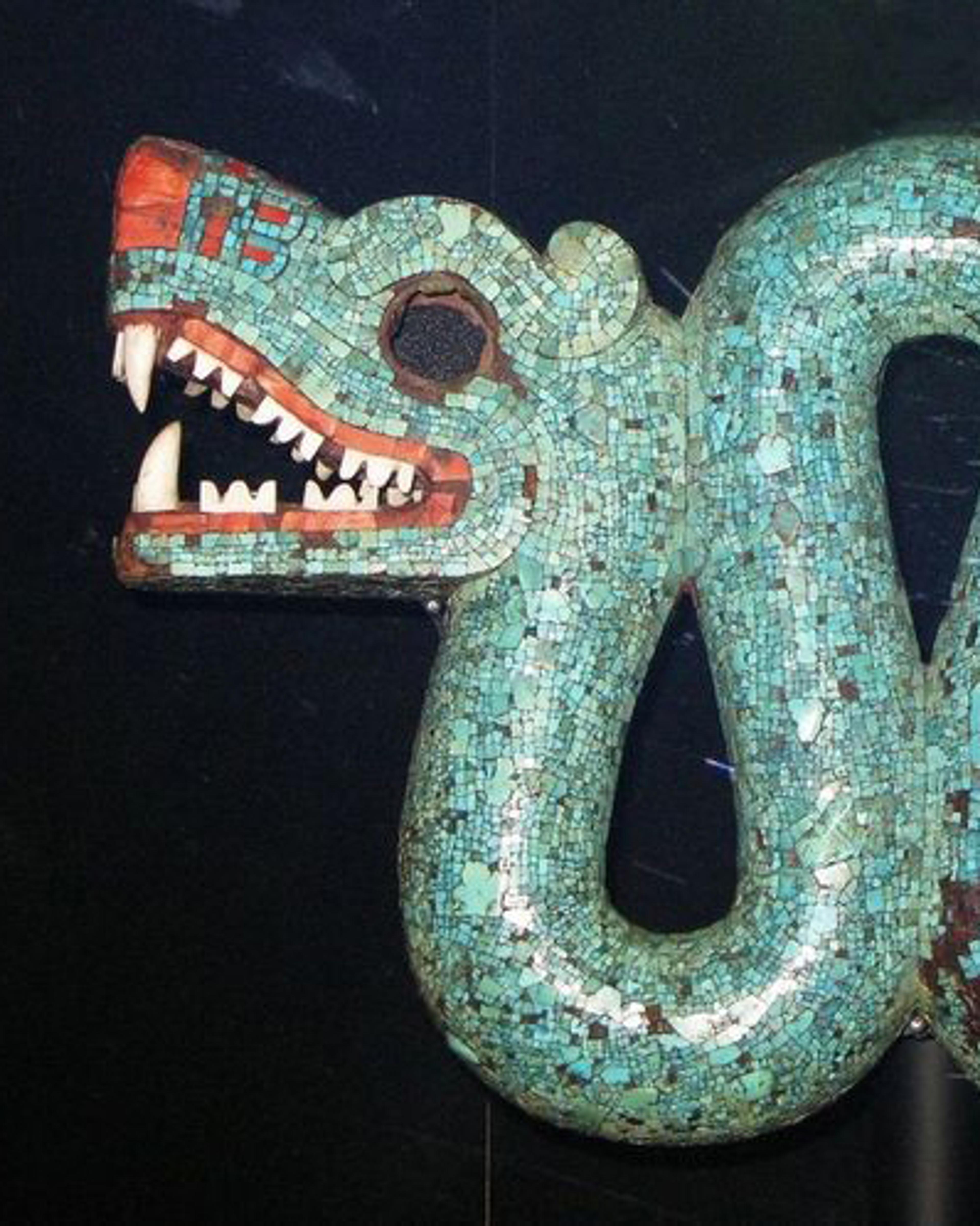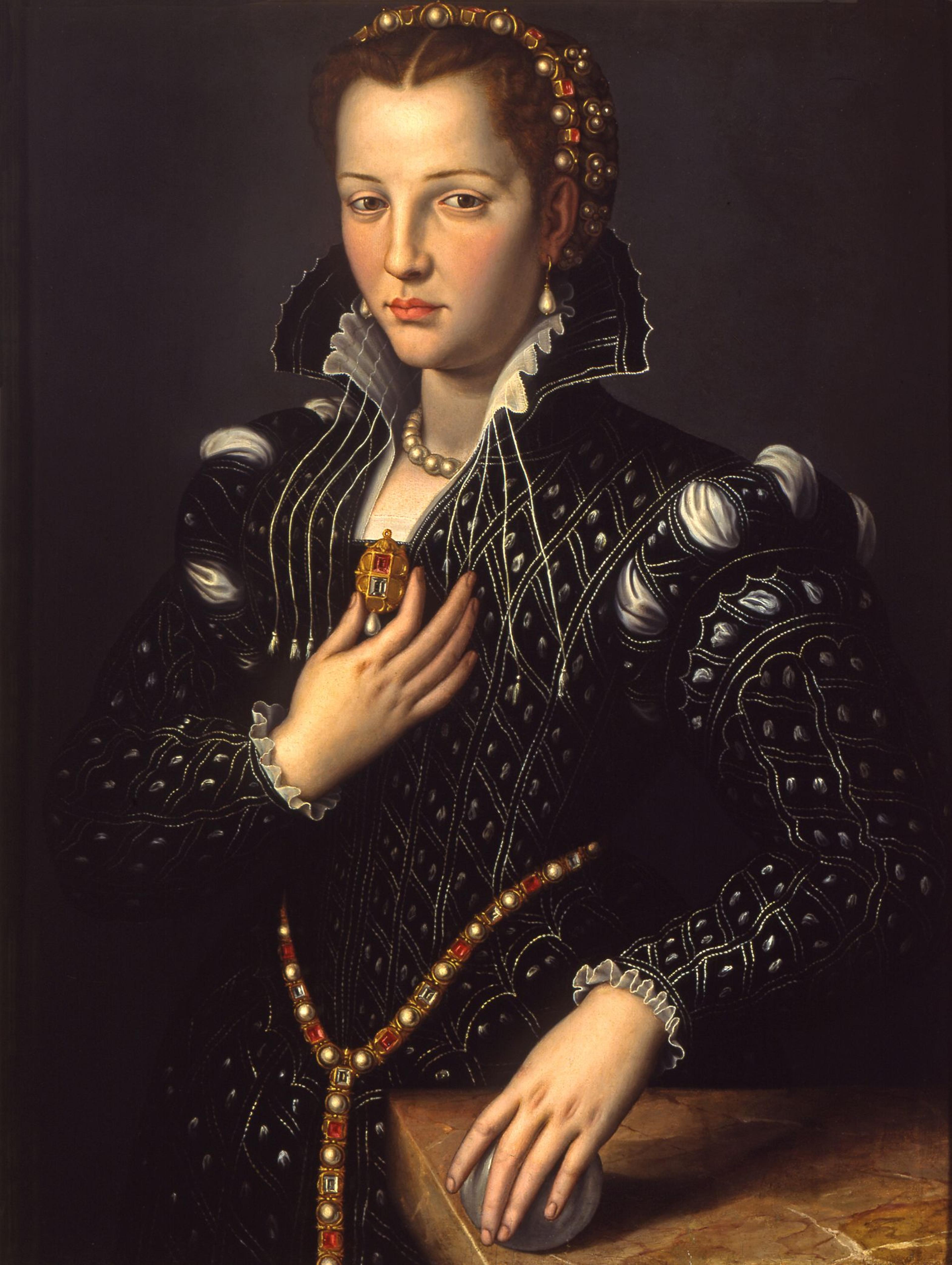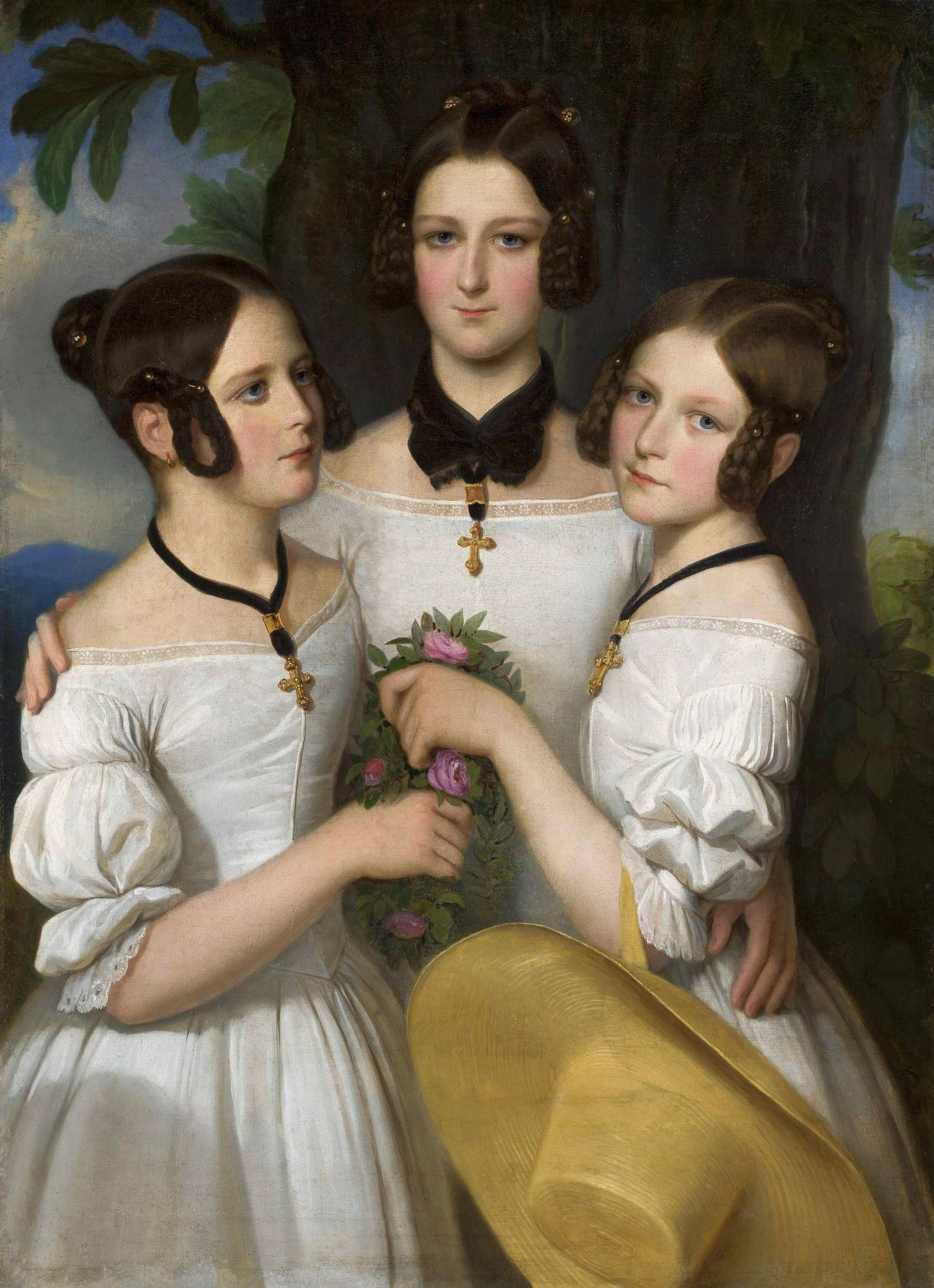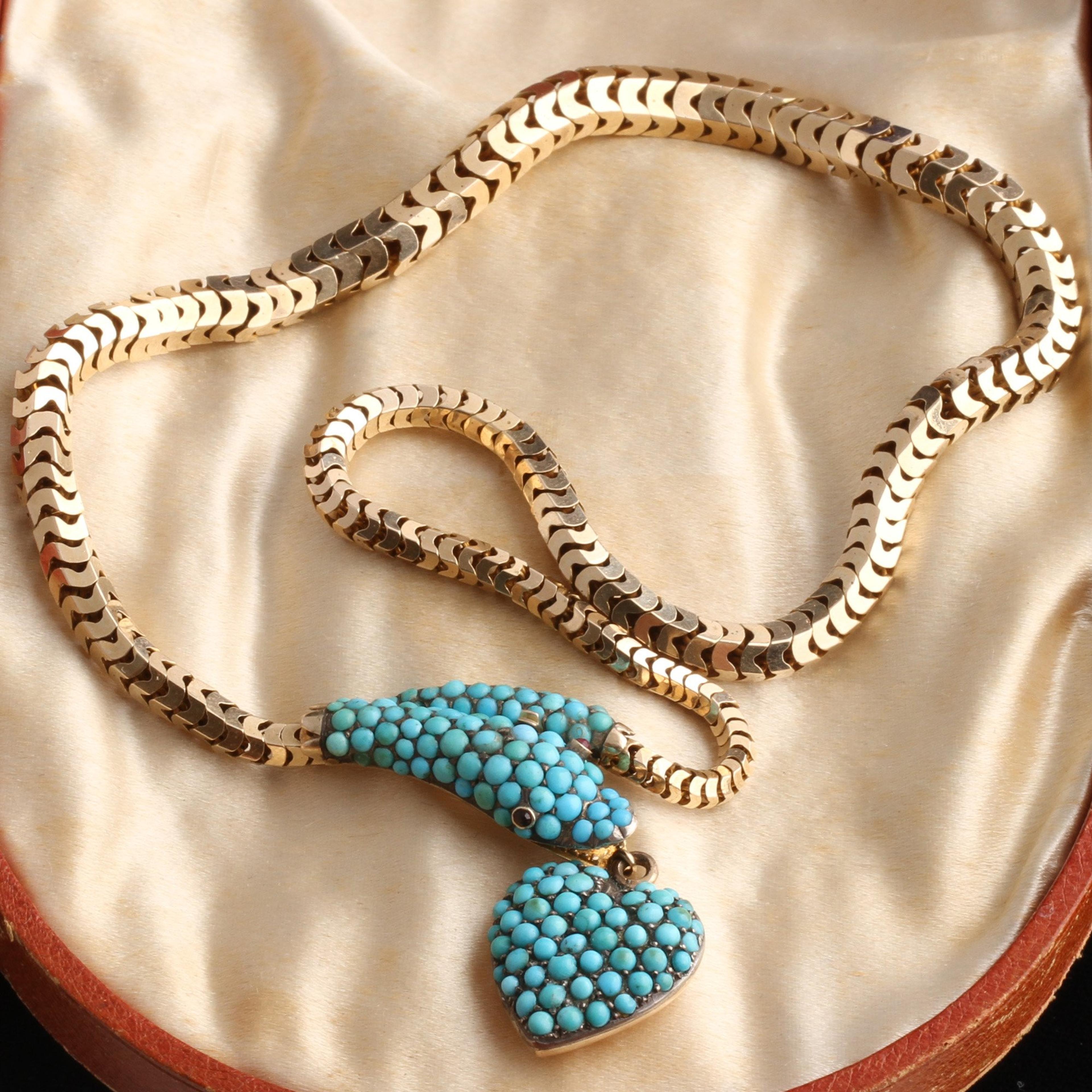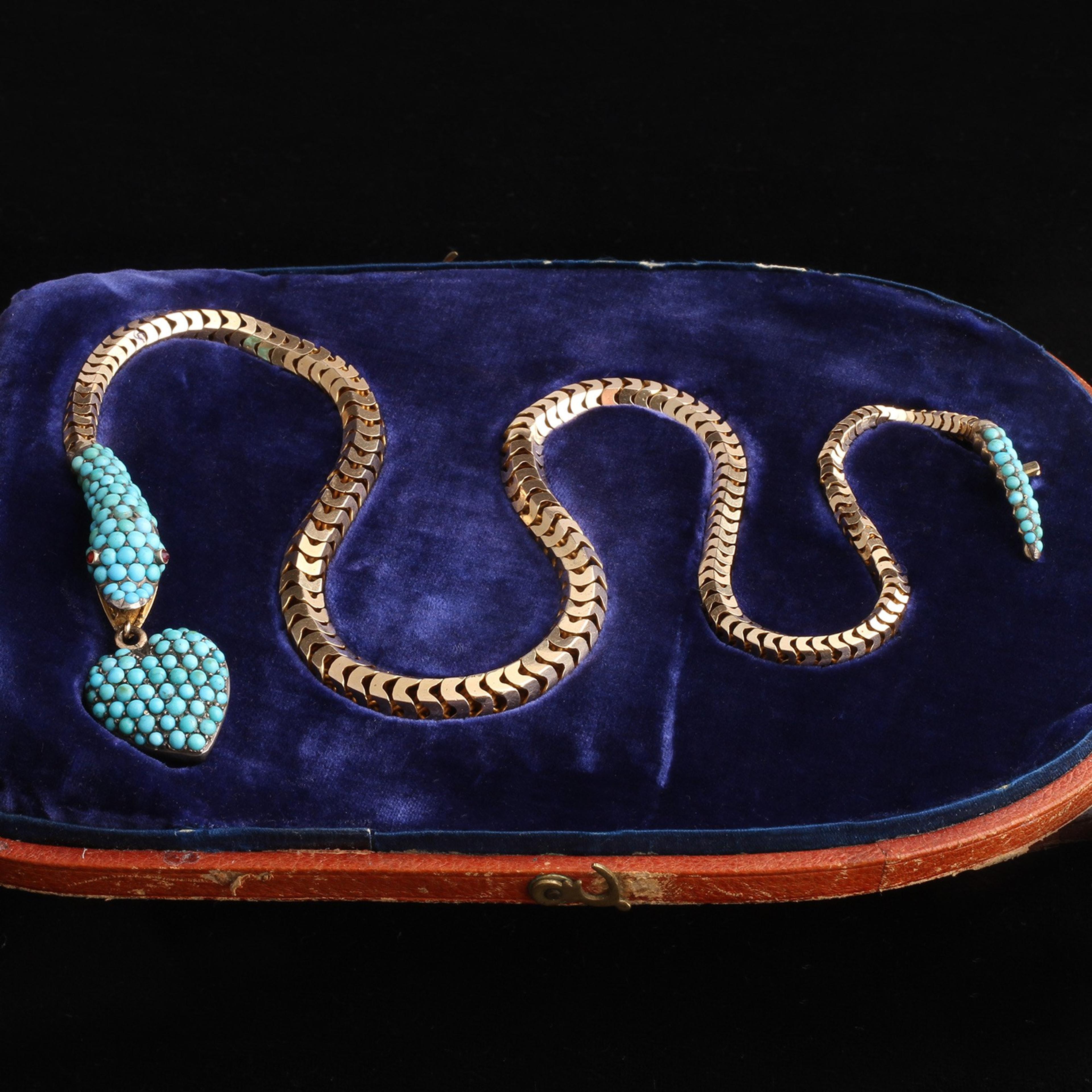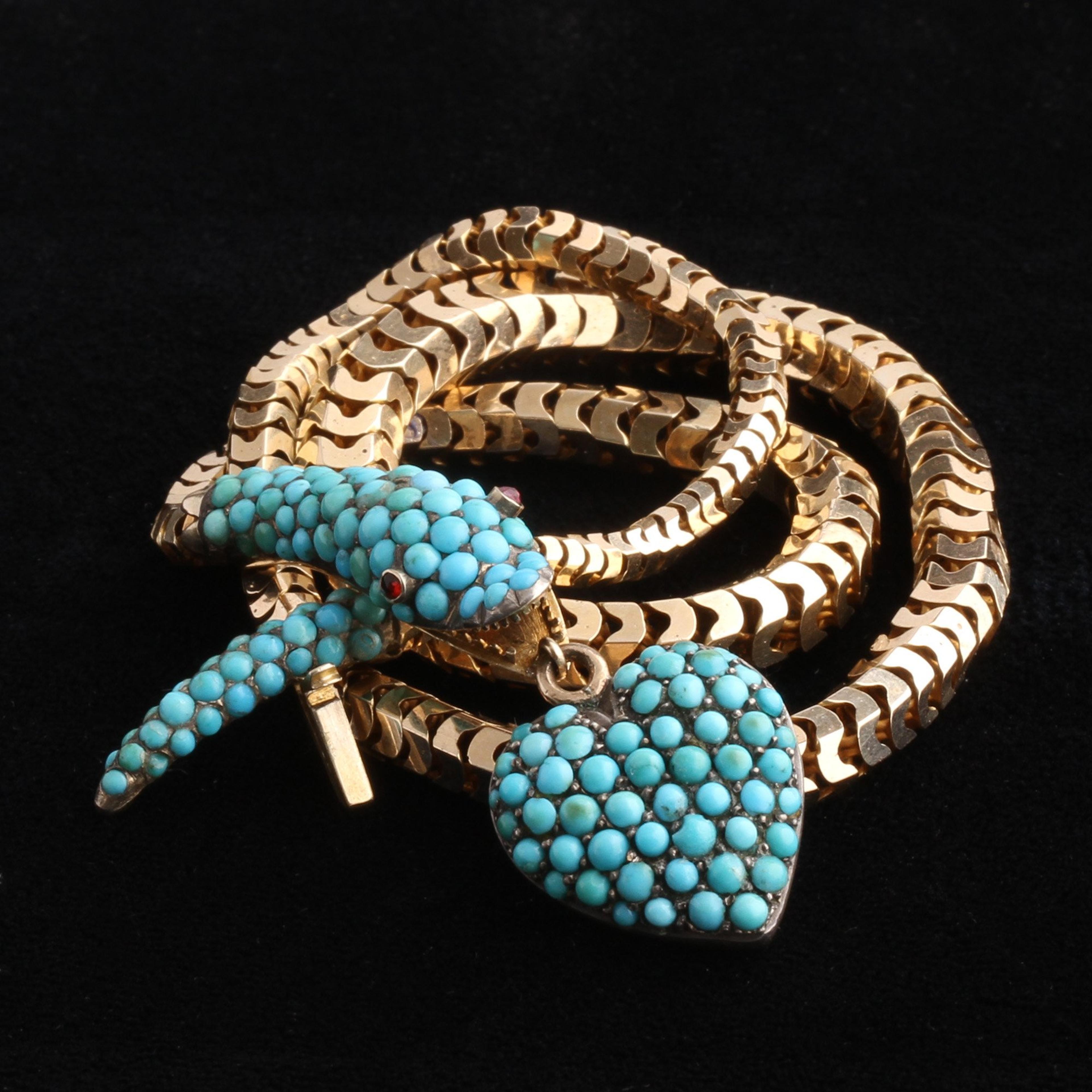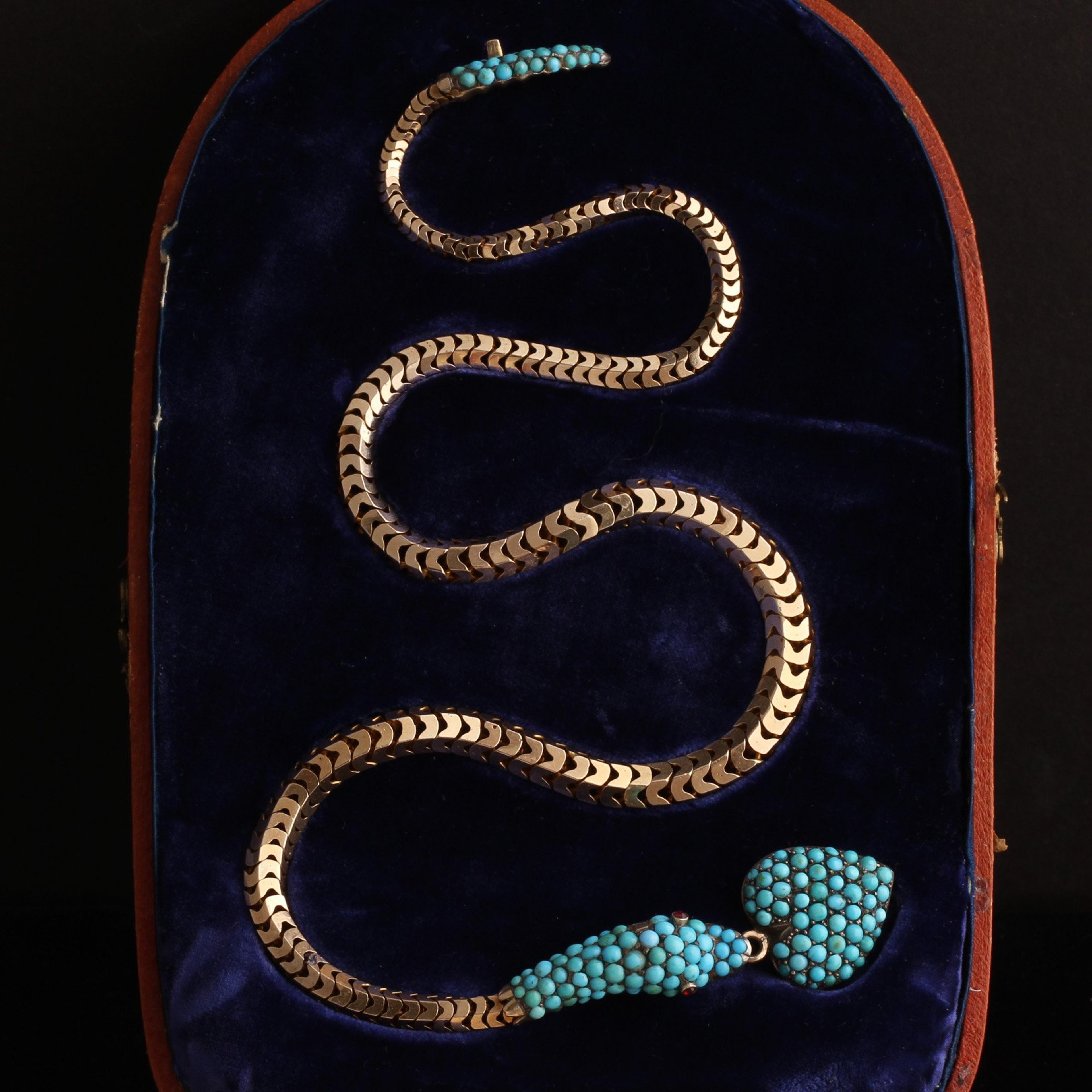Over the past several millennia, the snake has been used to represent many things: both good and evil, fertility, passion, and rebirth. The Victorians employed the image of the snake as a symbol of everlasting love. Serpent-themed jewelry was at the height of its popularity from about 1840 until the late 1880's (though it has never really gone out of style). This stunning necklace dates to that time - around 1870 - and is made in 14k yellow gold (tests) with an undulating scale-esque chain which graduates up and down in size from the tip of the tail to the head of the snake. The friendly face, studded with Persian turquoise cabochons and glittering with garnet eyes, conceals a hidden clasp. A turquoise pavé heart pedant is suspended from the snakes mouth. Necklace comes in its original fitted box.
thedetails
- Materials
14k yellow gold (tests), turquoise cabochons, garnets (one almandine, one pyrope).
- Age
c. 1870
- Condition
Very good - some discoloration to some turquoise cabochons, small dent to the reverse side of the heart locket.
- Size
15" length, 3/4" heart pendant.
Need more photos?
Send us an email to request photos of this piece on a model.
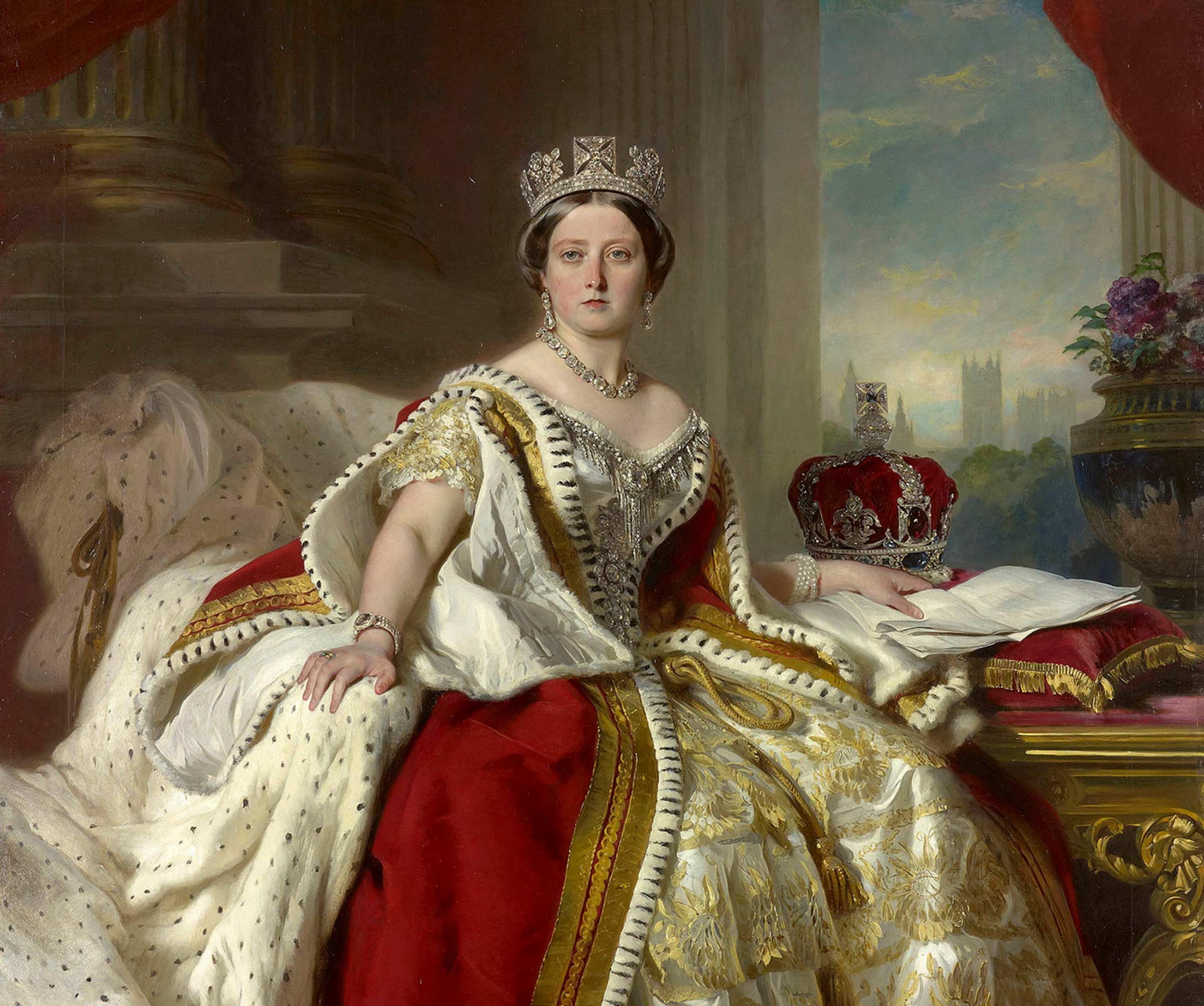
Aboutthe
VictorianEra
1837 — 1901
The Victorians were avid consumers and novelty-seekers, especially when it came to fashion, and numerous fads came and went throughout the 19th century. In jewelry, whatever fashion choices Queen V. made reverberated throughout the kingdom. The Romantic period reflected the queen’s legendary love for her husband, Albert.
Jewelry from this period featured joyful designs like flowers, hearts, and birds, all which often had symbolic meaning. The queen’s betrothal ring was made in the shape of a snake, which stood for love, fidelity, and eternity. The exuberant tone shifted after Prince Albert passed away in 1861, marking the beginning of the Grand Period. Black jewelry became de rigeur as the Queen and her subjects entered “mourning,” which at the time represented not just an emotional state, as we conceive of it today, but a specific manner of conduct and dress. She wore the color black for the remainder of her life, and we see lots of black onyx, enamel, jet, and gutta percha in the jewelry from this time. Finally, during the late Victorian period, which transitioned along with a rapidly changing world into the “Aesthetic Movement”, there was a return to organic and whimsical motifs: serpents, crescent moons, animals, and Japonaisserie designed for the more liberated “Gibson Girl”. During the second half of the 19th century, America entered the global jewelry market, with Tiffany and Co. leading the way. Lapidaries continued to perfect their techniques, and the old European cut emerged toward the end of the Victorian period. The discovery of rich diamond mines in South Africa made the colorless stones more accessible than ever before.
